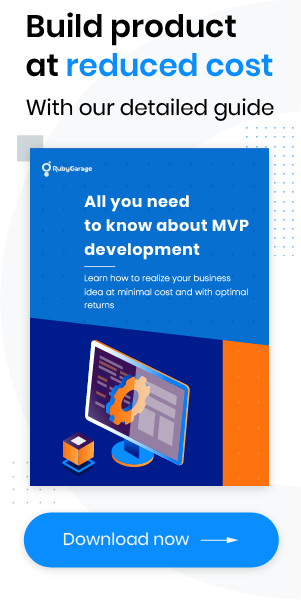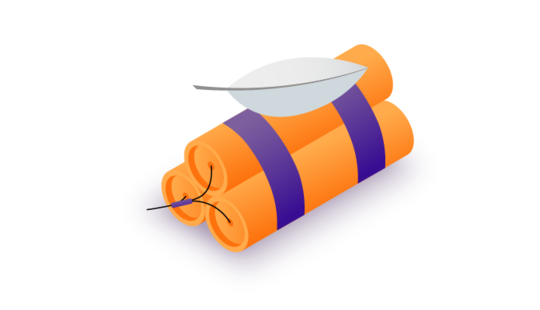-
Product Management
Software Testing
Technology Consulting
-
Multi-Vendor Marketplace
Online StoreCreate an online store with unique design and features at minimal cost using our MarketAge solutionCustom MarketplaceGet a unique, scalable, and cost-effective online marketplace with minimum time to marketTelemedicine SoftwareGet a cost-efficient, HIPAA-compliant telemedicine solution tailored to your facility's requirementsChat AppGet a customizable chat solution to connect users across multiple apps and platformsCustom Booking SystemImprove your business operations and expand to new markets with our appointment booking solutionVideo ConferencingAdjust our video conferencing solution for your business needsFor EnterpriseScale, automate, and improve business processes in your enterprise with our custom software solutionsFor StartupsTurn your startup ideas into viable, value-driven, and commercially successful software solutions -
-
- Case Studies
- Blog
How to Find Product–Market Fit Faster, Better, and Risk-free

Startups fail for different reasons, from their founders being burned out or lacking passion (5%) to running out of cash or failing to raise new capital (38%). In this article, we will focus on causes of failures that depend on product–market fit.
No marked need for the product (35%), pricing issues (15%), a poor product (8%), and a lack of passion (5%) are associated with insufficient product–market fit — or its total absence. We will talk about what product–market fit is, why it’s so important to have product–market fit for digital products, and how to efficiently find this fit and more than double the chances of your startup’s success.
What is product–market fit?
Product–market fit is an indicator showing how the product matches with the needs, interests, and finance possibilities of potential customers.
A product–market fit strategy is a set of actions aimed at solving the target customers’ problems. In other words, a company implements a certain product that solves a problem for a certain market segment and strives to create a recurring sales cycle.
A product that fits its market:
- Solves a specific problem for customers
- Is aimed at customers who are willing to pay for resolving this problem
In searching for the perfect product for the market, don't be afraid of changing your business model and experimenting.
Process for finding product–market fit

The process for finding product–market fit at high level is somewhat typical. There are five general stages here. So, you should form a vision of your product, the determine your TA, and make your hypotheses finished. After that, you should build an MVP and test your hypotheses practically. The last stage is analyzing metrics gained within the testing.
1. Form your product vision
Let’s assume you start with an idea of how to solve a specific problem. Now you need to decide what you expect to get out of your startup.
When launching a startup, you need to determine what you want to achieve. For almost every business, the first goal is to earn money. Other declared goals can be, for example, influencing people or helping a vulnerable community group. But most often, such aims come along with generating revenue.
To determine your goals, you need to start by discussing with your team your product idea. This idea can be called the product’s conceptual vision or general mission. For forming your vision you need to discuss your business needs and goals with your team.
There are different ways of forming a product vision. One of the most efficient is brainstorming.
During a brainstorming session, the team can get together or act separately. The goal for each team member is to answer questions that will identify your motivation.
The result of a brainstorming session could look like this:
We’re striving to create a B2B SaaS platform that uses a freemium monetization model. The best growth source is bootstrapping. The team must be highly passionate about the product.
Add to this your problem and solution and form a product vision statement. A convenient way of doing this is using the Product Vision Board by R. Pichler.
2. Identify your target audience (TA)
With your problem in mind and a vision for how you’re planning to solve it, you can identify your target audience.
Identifying your TA consists of several steps. You must first create ideal customer profile hypotheses. Then, you should research the market and competitors. Finally, you must reassess your previous findings (e.g. validate them).
Create an ideal customer profileA perfect ideal customer profile (ICP) describes your ideal potential customer in as much detail as possible. Ideal means that such a customer will get maximum benefits from purchasing your product or service.
Your ICP may include different characteristics of your product’s target audience:
- Business domain, industry, or niche
- Sales pattern
- Location
- Team size
- Challenges and pain points
- Reasons to choose your product or service
Customer profiles can help you better understand the behavioral characteristics of your customers.
Advantages of using an ICP:
- Reaching a relevant audience
- High response and conversion rates
- Good understanding of where to connect with TA
- Improved operational efficiency
To create an ICP, you must define your ideal customer in terms you’re more or less sure about. This means that you still haven’t both a real product and its customers, so you have to operate with your assumptions.
For example, say your product is an electronic payment system that is most beneficial for small transactions in USD and that has integrations with Shopify and WooCommerce.
You can assume the following about your ICP:
- Small or medium-sized merchant
- US-based
- Sells a high volume of cheap mass-market goods
- Operates a standalone e-store based on WooCommerce or Shopify
As a result, you will have a list of customer characteristics: demographics, geographics, industry or professional focus, etc. The more details you can determine, the more valuable your research will be.
Market researchMarket research helps to determine demand for your product. When conducting market research with no MVP, we operate with hypotheses.
Explore the market niche you’re trying to enter: its size, the level of demand, consumers’ purchasing power. Use data collected by others: official market research reports, historical data, etc. It is rather helpful at the earliest stages when you don’t even have an MVP to test the waters.
Use proven tools and approaches to create your ICP fast and analyze your TA deeply. Corridor tests and surveys are fine if your TA is available. Otherwise, seek your TA on crowdsourcing platforms like Respondent.io and Userinterviews.com.
Competitor researchExplore your competitors to find their strengths and weaknesses. To do this, define:
- Which companies offer a similar solution for your target audience
- Strengths and weaknesses of competitors’ products
This will give you an understanding of what competitors are missing and what will be better to add to your initial product release.
Correction of previous findingsAfter writing down your assumptions and research results, analyze them thoroughly. Thanks to this analysis, you can find flaws in your assumptions and correct them, polishing your ICP.
Remember that your ICP research as well as all other actions described above are based mostly on hypotheses. In the situation, where you have no released product and no sales, an efficient way of making your findings more accurate is to conduct a survey of potential customers.
To conduct a survey, get a group of potential customers matching your ICP. Form a list of questions that will help you better understand the needs, habits, and behavior of your TA related to the product.
We recommend you use the insights and advice from the legendary book The Mom Test by R. Fitzpatrick while you’re forming your questionnaire.
While conducting your survey, document the following information:
- Product benefits that your interviewees consider the most valuable
- Product flaws that interviewees considered inadequate.
- Pain points interviewees are concerned about
- Objections and doubts about your product
- Additional features interviewees want to see in your product
As a result, you’ll get real opinions about your product from those who will likely be your first users.
3. Finalize your product hypotheses
Based on the pain points you’ve identified, determine product hypotheses (vision, unique value proposition, business model hypothesis)

Write down ideas about the product and its business model in the following sections:
A) Unique value proposition:
- What problem the product solves and what benefits it brings
- What the market segment/person you will be targeting does
- Be as specific as possible
B) Business model hypothesis (Lean Canvas):

C) Killer feature set
- Clearly define product features
- Identify the full scope of the product and the minimum viable product (MVP)
- List features that will be scheduled for further releases rather than the initial release
Your starting assumptions will likely not be reflected in the final product. And it may seem that all these preliminary hypotheses about the problem, value proposition, approximate characteristics, acquisition model, and other elements of the business model may be useless. However, formulating hypotheses or product assumptions allows you to start testing them and encourages you to think about different areas for experiments.
For example, say you’re planning to build an online investment platform. Make a hypothesis about how valuable your new platform will be for brokers, how many users it will be able to reach, and what approximate revenue you will be able to get from connecting new referrals.
4. Test hypotheses via prototypes, MVP, and MSP
After the theoretical part, it’s time to go practice and test your hypotheses.
Prototyping, MVP, and MSPPrototyping is one of the fastest and most efficient approaches to visualize a product and align the vision among different stakeholders. With just a prototype, you can start testing the product with real users.
An MVP is:
- A simplified version of a new product that allows you to check your idea
- A cheap and fast way to kick-start your business
An MVP allows you to:
- Check whether your product will survive on the market and if anyone needs it
- Define the basic features your users are willing to pay for
- Collect the maximum amount of confirmed customer information with the least effort
You should also differentiate your MVP from the minimum sellable product (MSP).
An MSP is the best version of an MVP, which you will receive after a series of trials and errors. It has a basic set of features that meet users’ needs and concerns.
An MSP allows you to launch your product earlier and at a lower cost than when launching the full version of the product. The scalability of the MSP allows you to adapt to changes on the go.
Your MSP should contain the main product functions that solve at least one problem well and allow you to be competitive. As a pleasant bonus, the MSP can also include solutions to problems that customers don't fully realize they have.
Test acquisitionNow it’s time to show your brand-new MVP to potential customers by running test acquisition. There are various test acquisition methods. One of the most effective, cheapest, and fastest is using landing pages.
The core activity here is to create a web page aimed at the highest possible conversion rate. After that, you need to:
- Identify test/product success indicators
- Set up analytics
- Start collecting and interpreting analytics
- On the basis of collected analytics, consider corrective actions
Analytics captures a desired action that may be decisive for the product’s success. Depending on the context of the market and the TA, this action may be:
- Registering
- Subscribing
- Making a purchase
- Making a deposit
- Taking some other action
What you will get:
- The possibility to tell how many people are interested in your product and how strong their interest is based on traffic activity
- Feedback by contacting those who filled out the form and asking about what do they think about the product
Customer validation is a way to determine the basic features of your MVP using minimal resources and collecting feedback from potential customers.
Customer validation allows you to:
- Determine if you’re ready to enter the market
- Better understand your customers
- Build a sales plan
- Determine the time to increase sales and build effective marketing
- Save resources and be prepared for possible failures
For a better understanding of your consumers, we recommend you interview them.
During customer validation sessions, you must determine:
- Does the problem you’re solving with your product really exist?
- Do respondents feel that your product solves this problem?
- Does the price you’re asking for your product seem acceptable to customers?
- Would respondents buy your product if they experienced the problem it solves?
5. Check your economics
At the final stage, focus on measuring metrics that indicate how good the product–market fit is.
You (or your development team members, of course) should set up analytics tools for data gathering and analysis. The data you collect should correspond to the metrics you’ve identified in the Lean Canvas. Interpreting these metrics is the key for understanding your product–market fit.
Here are the signs that your product has the right fit for the market:
- Customers find you through organic and paid search
- The trial pipeline grows month over month
- You have regular sales
- You can easily target and market to the market segment
- Customers regularly interact with your product
- Monthly recurring revenue (MRR) is growing
For example, say you have developed food delivery software for your city. In order to assure that your product has the right fit, you should make sure that the request – delivery – payment cycles are constant, in the proper amount, and will not fail.
Summary
Finding your product–market fit is an exciting and serious process. If you neglect it, you can go broke. One idea is not enough for a successful startup.
You need to understand who your TA is. Then. make sure that the product solves the problems of TA.
You can build a product–market fit strategy yourself at the very beginning of this process by following our advice. This will undoubtedly reduce the risk of launching a product that doesn’t find market support.
FAQ
-
Product–market fit is an indicator showing how the product matches with the needs, interests, and finance possibilities of potential customers.
You can check how much your product is fit for the selected market with the help of a team of RubyGarage professionals.
-
The process for finding product–market fit consists of five stages:
- Form your product vision
- Identify your target audience (TA)
- Finalize your product hypotheses
- Test hypotheses via prototypes, MVP, and MSP.
- Check your economics
RubyGarage teamat all steps from forming your product vision to checking your economics will help you find a product-market fit.
-
MVP is minimum viable product.
An MVP is:
- A simplified version of a new product that allows you to check your idea
- A cheap and fast way to kick-start your business
An MVP allows you to:
- Check whether your product will survive on the market and if anyone needs it
- Define the basic features your users are willing to pay for
- Collect the maximum amount of confirmed customer information with the least effort
RubyGarage team is filled with highly skilled professionals will help you to build an MVP for a successful business.











